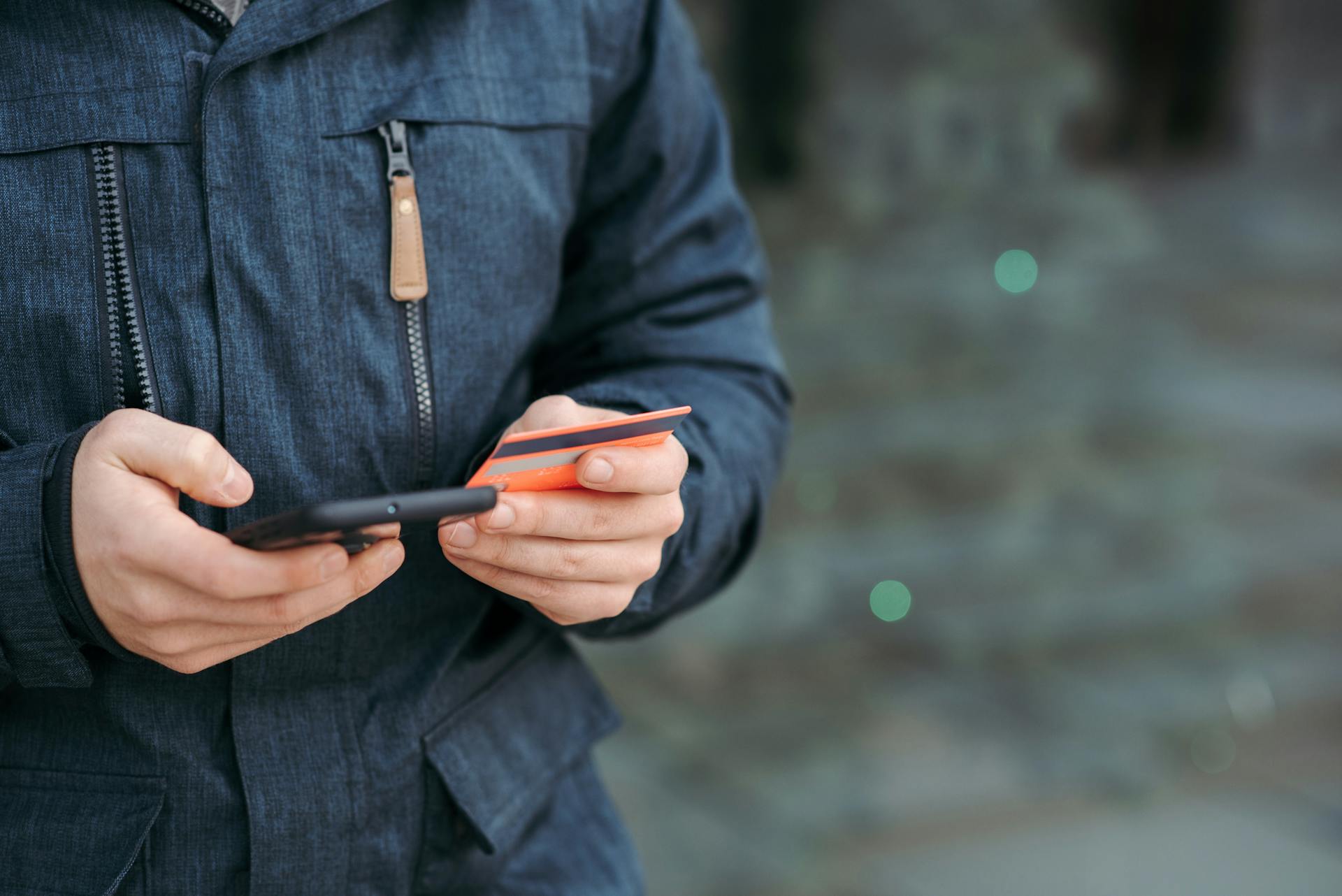
Mobile payments have revolutionized the way we make transactions, offering a secure and convenient way to pay for goods and services.
With mobile payments, you can leave your wallet at home and still make purchases with ease. This is because mobile payments use advanced encryption technology to protect your sensitive information.
One of the biggest benefits of mobile payments is that they eliminate the need for physical cash and credit cards, making transactions faster and more efficient.
Mobile payments can be made through various methods, including tap-to-pay, scan-to-pay, and in-app payments.
What Are Mobile Payments?
Mobile payments allow users to make transactions using their mobile devices, such as smartphones or tablets, instead of traditional payment methods like cash or credit cards.
Mobile payments can be made through various methods, including contactless payments, mobile wallets, and peer-to-peer transactions.
Mobile wallets, like Apple Pay and Google Pay, store users' payment information and can be used to make transactions at participating merchants.
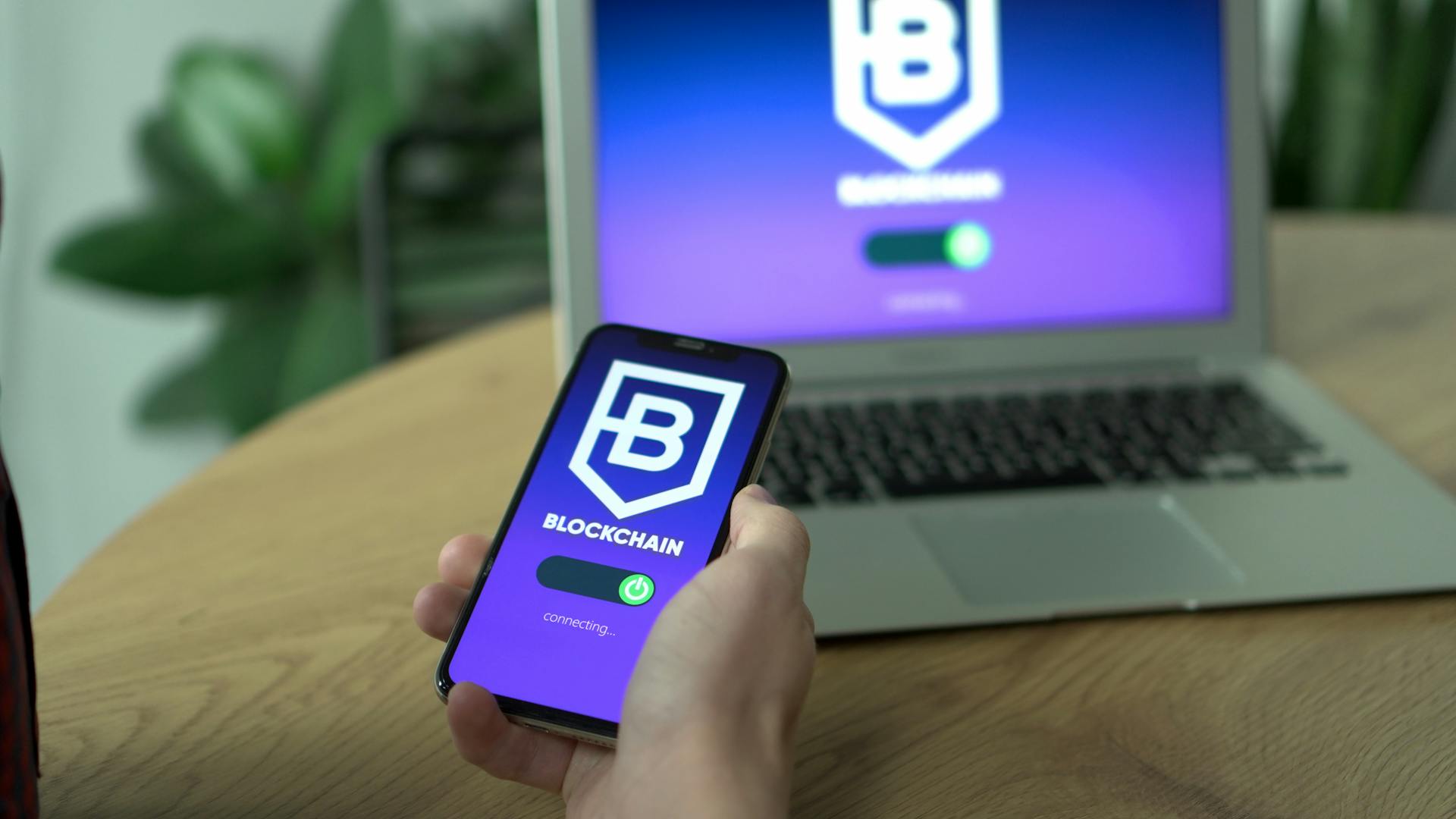
These wallets use Near Field Communication (NFC) technology to enable contactless payments, making transactions faster and more convenient.
Mobile payments can also be made through peer-to-peer transactions, where users can send money to friends or family members using services like Venmo or Zelle.
Mobile payments offer several benefits, including increased convenience, speed, and security compared to traditional payment methods.
Users can also earn rewards and cashback on their mobile payments, depending on the payment method and merchant.
A fresh viewpoint: How Many Paytm Users in India
Types of Mobile Payment Methods
There are several types of mobile payment methods available, each with its own unique features and benefits. One of the most popular is Apple Pay, which works on iPhone and Apple Watch devices, allowing users to add debit or credit cards to the Wallet app and make contactless payments at participating stores.
QR codes can be categorized into two main types, and are another example of a mobile payment method. Apple Pay can also be used online, through a checkout page with a "Buy With Apple Pay" button. Customers can also use Samsung Pay, which is available on Samsung devices and offers features like card integration and contactless payments.
If this caught your attention, see: Contactless Payments in the Us

Here are some of the most common types of mobile payment methods:
- Apple Pay: works on iPhone and Apple Watch devices, and can be used in-store and online.
- Samsung Pay: available on Samsung devices, with features like card integration and contactless payments.
- Google Pay: a contactless payment method that works with NFC technology.
- P2P payments: apps like Venmo, Cash App, and Zelle allow users to send money directly to friends or family.
These are just a few examples of the many mobile payment methods available, and the right one for your business will depend on your specific needs and customer base.
QR Code
QR codes have been around since 1994 and were originally used to track products in warehouses. They're a type of two-dimensional bar code that contains meaningful information directly in the code.
QR codes can be used for payments, where the code is scanned by a POS or another mobile device to complete the transaction. This can happen in two ways: the payer presents the QR code on their mobile device, or the payee presents the QR code, which is then scanned by the payer.
QR codes can be used for mobile self-checkout, allowing customers to scan a product's QR code or barcode to purchase it on the spot. This can help reduce long checkout lines.
Explore further: Bank Bsb Codes
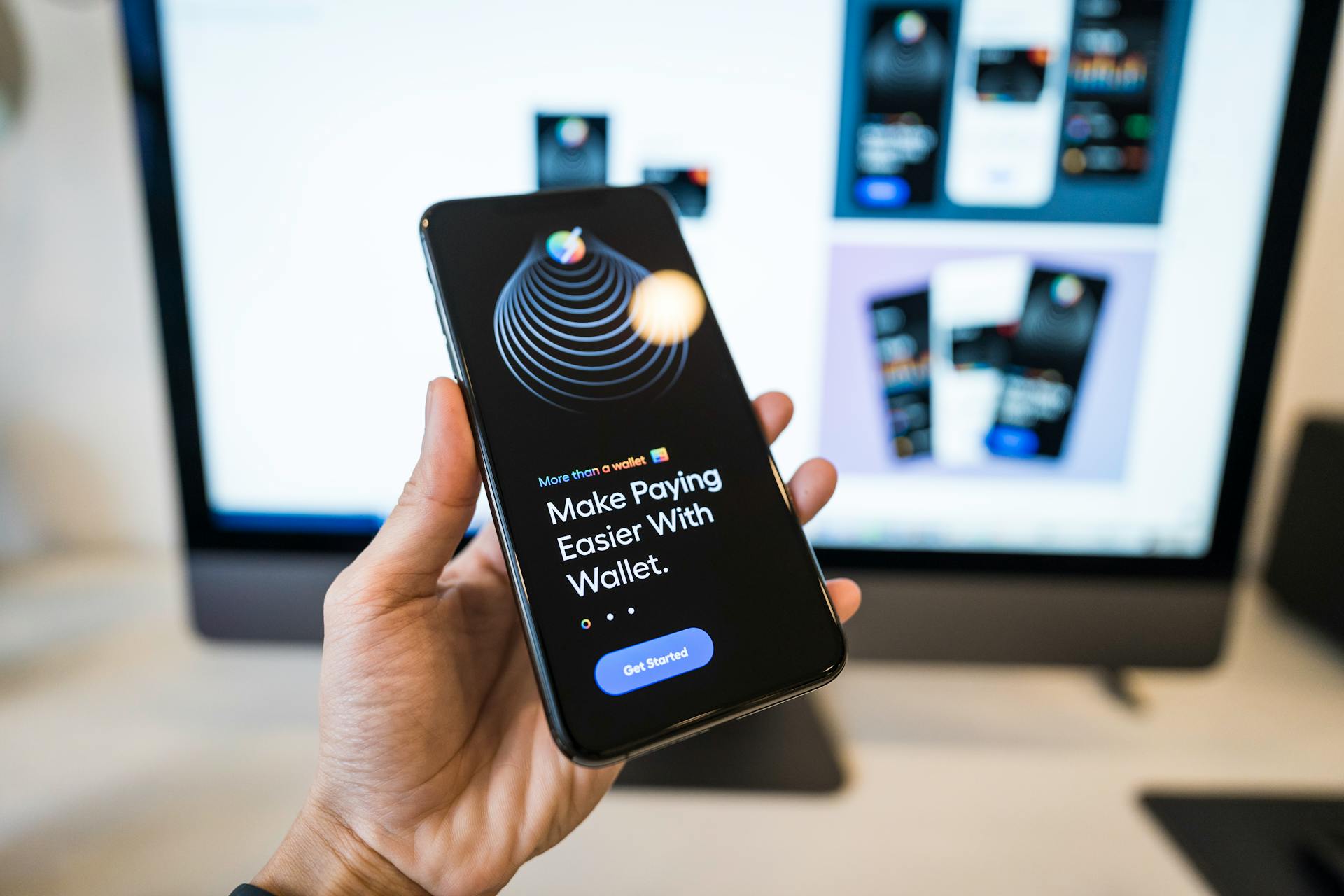
Here are the two main ways QR code payments work:
- The QR code is presented on the mobile device of the person paying and scanned by a POS or another mobile device of the payee
- The QR code is presented by the payee, in a static or one time generated fashion and it is scanned by the person executing the payment
NFC
NFC is a technology that enables contactless payments. It's a convenient way to make transactions without having to swipe or insert a card.
To accept NFC payments, you need a point-of-sale device equipped with NFC technology, like the Square contactless and chip reader. This device will allow you to accept Apple Pay and Google Pay.
A customer simply holds their phone near a compatible payment terminal to complete a transaction. It works the same as tapping a card.
To get started with NFC payments, you can ring up a purchase, look for the green light to appear on the reader, and then have the customer hold the phone over the reader to pay. The whole transaction is completed in just seconds.
Consider reading: Electronic Transaction Act Thailand
P2P
P2P payments are a convenient way to send money directly to friends or family using their email addresses or phone numbers.
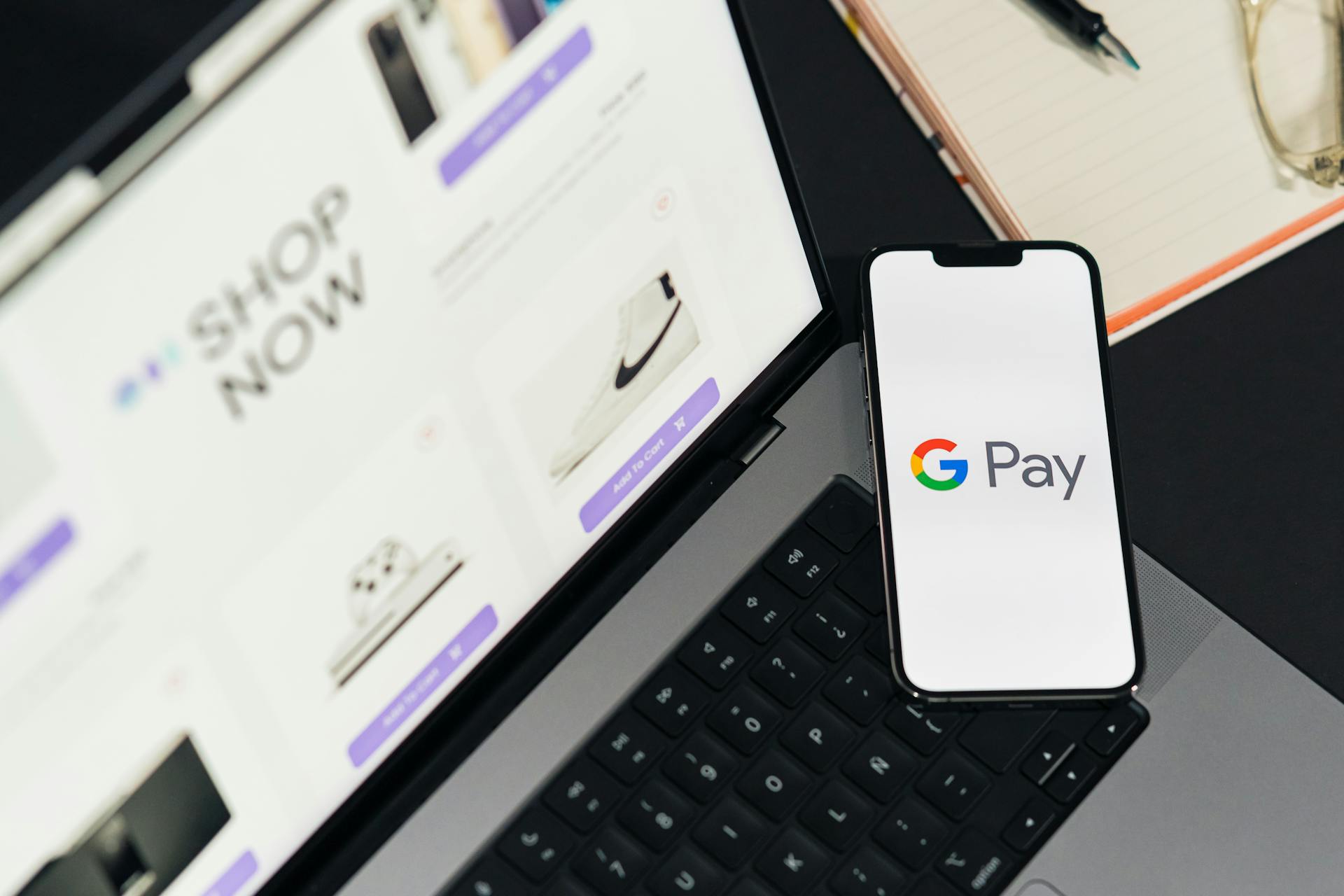
These apps are often free for users, making them a great option for splitting expenses or sending money as a gift.
Venmo, Cash App, and Zelle are all common options for P2P payments.
P2P payment apps are also helpful for small businesses because they're easy to set up.
You can use these apps to send money to anyone with an email address or phone number.
If this caught your attention, see: Apple P2p Payments
Mobile Payment Wallets
Mobile payment wallets are apps that store credit card, debit card, or bank account information securely on a smartphone. This allows customers to make purchases without physically carrying their debit and credit cards.
Some popular mobile wallets include Alipay, Amazon Pay, Apple Wallet, BHIM, Cloud QuickPass, GCash, Google Wallet, Gyft, LG Pay, Line Pay, Mi Pay, Mir Pay, Paytm, PhonePe, Samsung Wallet, Touch 'n Go eWallet, and Venmo.
Mobile wallets employ near field communication (NFC) technology, which enables devices to communicate wirelessly when close together. This allows for contactless payments, making transactions quick and secure.
To accept mobile payments at your store, you need a point-of-sale device equipped with NFC technology, such as the Square contactless and chip reader.
Additional reading: Take Contactless Payments on Phone
Wallet
A mobile wallet is essentially a digital wallet on your phone, where you can store your debit or credit card information securely. You can add multiple cards to some mobile wallet apps, allowing you to pay without physically carrying your cards.
Mobile wallets employ one of two systems to process transactions, but the exact system is not specified in the article. One notable example of a mobile wallet is Alipay, which is a popular payment method in some regions.
To accept mobile payments at your store, you'll need a point-of-sale device equipped with NFC technology, such as the Square contactless and chip reader. This will allow you to accept Apple Pay and Google Pay transactions, which are completed in just seconds.
Mobile wallet technology is based on NFC, which enables wireless communication between devices when they're close together. This technology is a subset of RFID, which has been used for decades in various applications.
Here are some notable mobile wallets:
- Alipay
- Amazon Pay
- Apple Wallet
- BHIM
- Cloud QuickPass
- GCash
- Google Wallet
- Gyft
- LG Pay
- Line Pay
- Mi Pay
- Mir Pay
- Paytm
- PhonePe
- Samsung Wallet
- Touch 'n Go eWallet
- Venmo
- WeChat Pay
Mobile wallet adoption has been increasing, with 68% of Gen Z consumers interested in instant person-to-person payments, according to a 2020 Accenture report.
Cloud-Based
Google, PayPal, GlobalPay, and GoPago use a cloud-based approach to in-store mobile payment, placing the mobile payment provider in the middle of the transaction.
This approach involves two separate steps. First, a cloud-linked payment method is selected and payment is authorized via NFC or an alternative method. The payment provider automatically covers the cost of the purchase with issuer-linked funds during this step.
In a separate transaction, the payment provider charges the purchaser's selected, cloud-linked account in a card-not-present environment to recoup its losses on the first transaction.
Explore further: First Ledger Xrpl
How Mobile Payments Work
To pay with your mobile device at a store's checkout counter, hold your device close to the NFC-enabled payments terminal, making sure it's within 2 inches of the source. This is how contactless payments work.
Mobile wallet payments are essentially a conversation between your device and the NFC-enabled point of sale, passing encrypted information back and forth to process the payment. This takes just seconds, making NFC payments leagues faster than cash.
Using mobile payments is simple and secure, thanks to tokenization, which safeguards your bank details in mobile payments apps.
Explore further: B of a Mobile Banking App
Remote Authentication
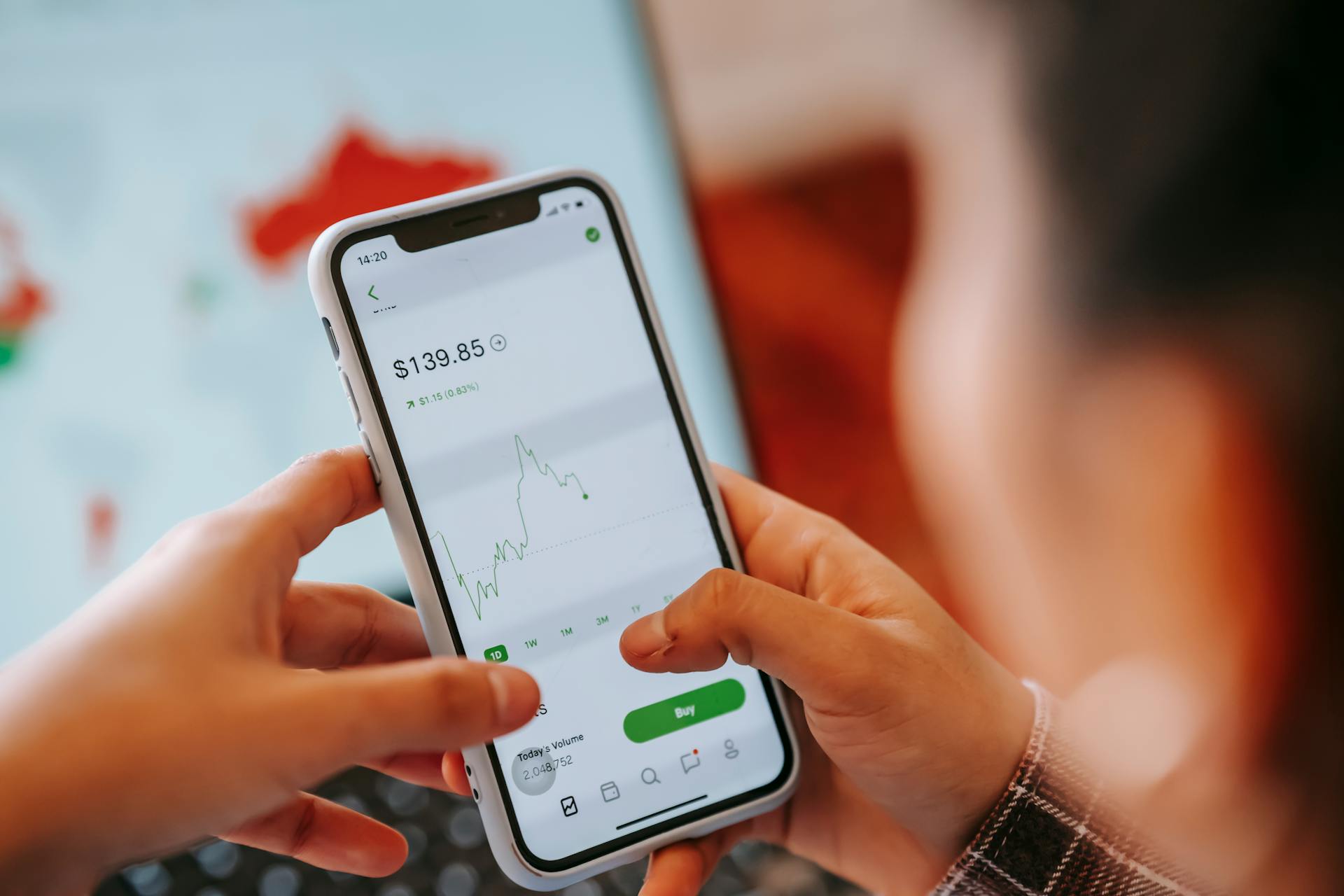
Remote authentication is a crucial aspect of mobile payments, ensuring that transactions are secure and trustworthy.
SMS-based authentication is still widely used, especially for remote payments like bill payments and seat upgrades on flights.
A higher-level security strategy called 'tokenization' is employed to prevent sensitive account details from being transmitted.
Tokenization replaces sensitive information with a unique token, making transactions more secure.
Many mobile payment solutions don't require remembering keywords, as sessions are initiated by the enterprise to establish a transaction-specific context.
Reply messages are linked to the proper session and authenticated, either synchronously through a short expiry period or by tracking session according to varying reply addresses and/or reply options.
Mobile payment apps use advanced technology to safeguard sensitive financial information, never storing credit and debit card data on the device.
Check this out: Remote Deposit
How They Work
Mobile payments work by using near-field communication (NFC) technology to transfer encrypted information between your device and the point of sale terminal.

To pay with your mobile device, hold it close to the NFC-enabled payments terminal, typically within 2 inches.
The transaction happens quickly, taking just seconds, which is faster than traditional magstripe and chip card transactions.
Tokenization plays a crucial role in mobile payment security, safeguarding your bank details in mobile payments apps.
In Apple Pay, for example, your card details are replaced with a series of randomly generated numbers, making it difficult for fraudsters to clone your account.
These random numbers are sent back to Apple, which programs them into your phone, keeping your account information secure.
They're Fast
Mobile payments are incredibly fast, taking around a second to process, which is a big advantage over other payment methods. This speed makes them particularly appealing to businesses with checkout lines, like quick-service restaurants and retailers.
One of the main benefits of mobile payments is that they can move checkout lines faster, which means more sales in a shorter amount of time. This is a huge advantage for businesses that rely on a steady stream of customers.
Mobile payments are also significantly faster than EMV chip payments, which can be quite sluggish. This is a big win for customers who value their time.
Consider reading: Online Real Time Bill Payment
7 Benefits

Mobile payments offer a range of benefits that make them a convenient and secure way to pay. The most obvious benefit is the elimination of a physical wallet, saving time and making transactions safer.
Mobile payments are more secure than physical credit cards, thanks to features like Touch ID and PIN input. Individual security codes are generated for each transaction, reducing the risk of fraud.
Mobile payments offer an additional level of personal privacy, as users can keep their credit card information hidden from others. This is especially useful for individuals with low credit scores or limited credit lines.
Mobile payments are incredibly convenient, allowing users to complete transactions on the go using their phones or devices. This ease of use can lead to higher customer satisfaction and loyalty.
With mobile payments, customers can check out quickly without counting out cash or swiping a card, making the checkout process faster. This efficiency shortens the checkout process and enhances the overall shopping experience.
Broaden your view: Find Paypal Option on Shop Pay Checkout
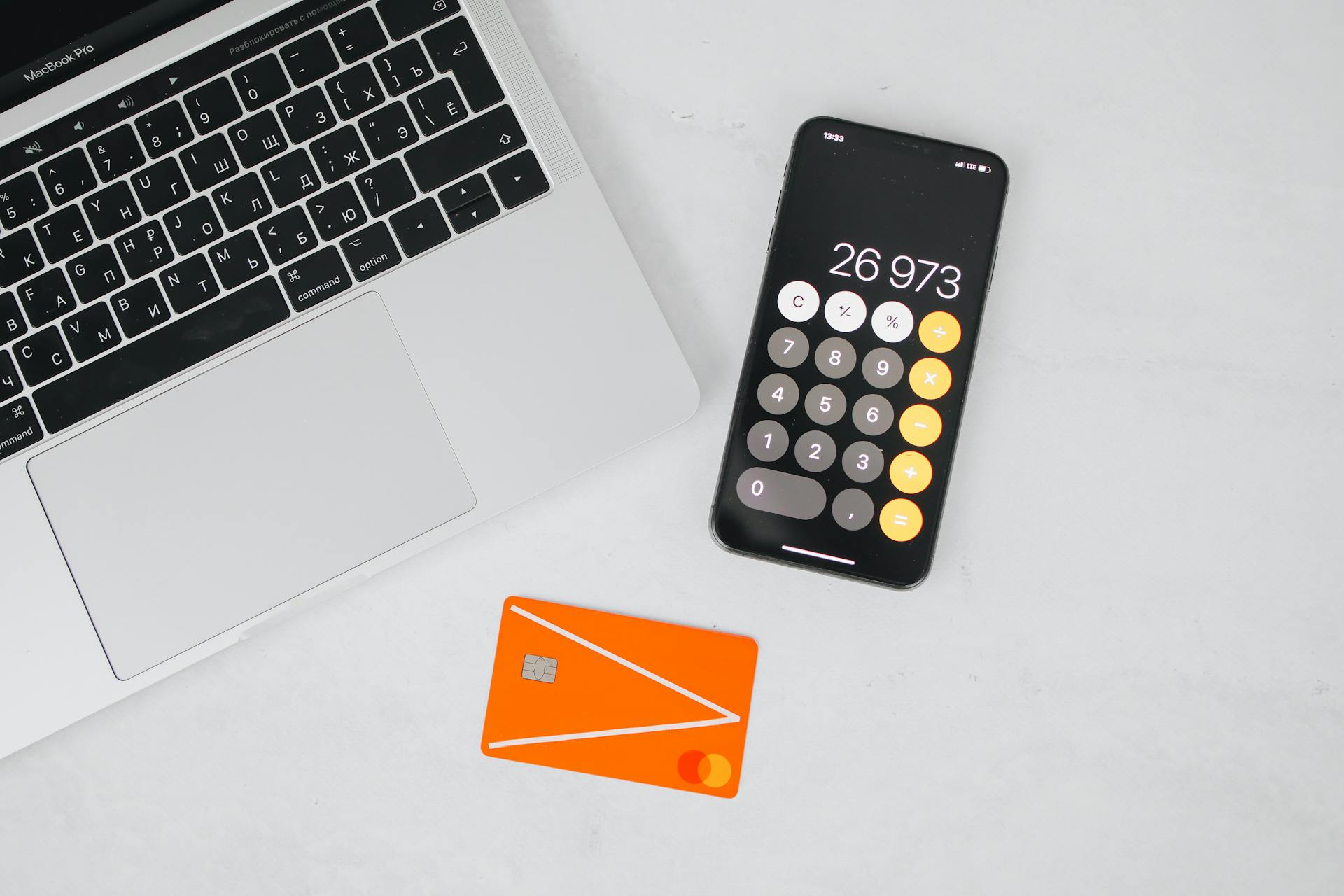
Mobile payment apps usually have lower transaction fees than credit card companies, saving merchants money on each transaction. The streamlined checkout process can also cut labor costs and boost operational efficiency.
By using mobile payments, merchants can reduce the risk of fraudulent activity, as they don't have to deal with ID checks or suspicious transactions. This makes mobile payments a smart move for merchants, as they can save time and resources.
You might like: Amazon Transaction Pay
Mobile Payment Methods and Apps
Mobile payment methods and apps have made it easier than ever to send payments from our devices. Many traditional banks now offer mobile apps that let customers manage their finances on the go, including transferring money between accounts, paying bills, and viewing transaction history.
These mobile banking apps don't usually work for in-person, contactless purchases, but they're an additional tool to a mobile wallet or peer-to-peer (P2P) payment app. Mobile wallets like Apple Pay and Google Pay let users connect existing cards and use them on their phones or computers for contactless payments.
Expand your knowledge: Contactless Payments
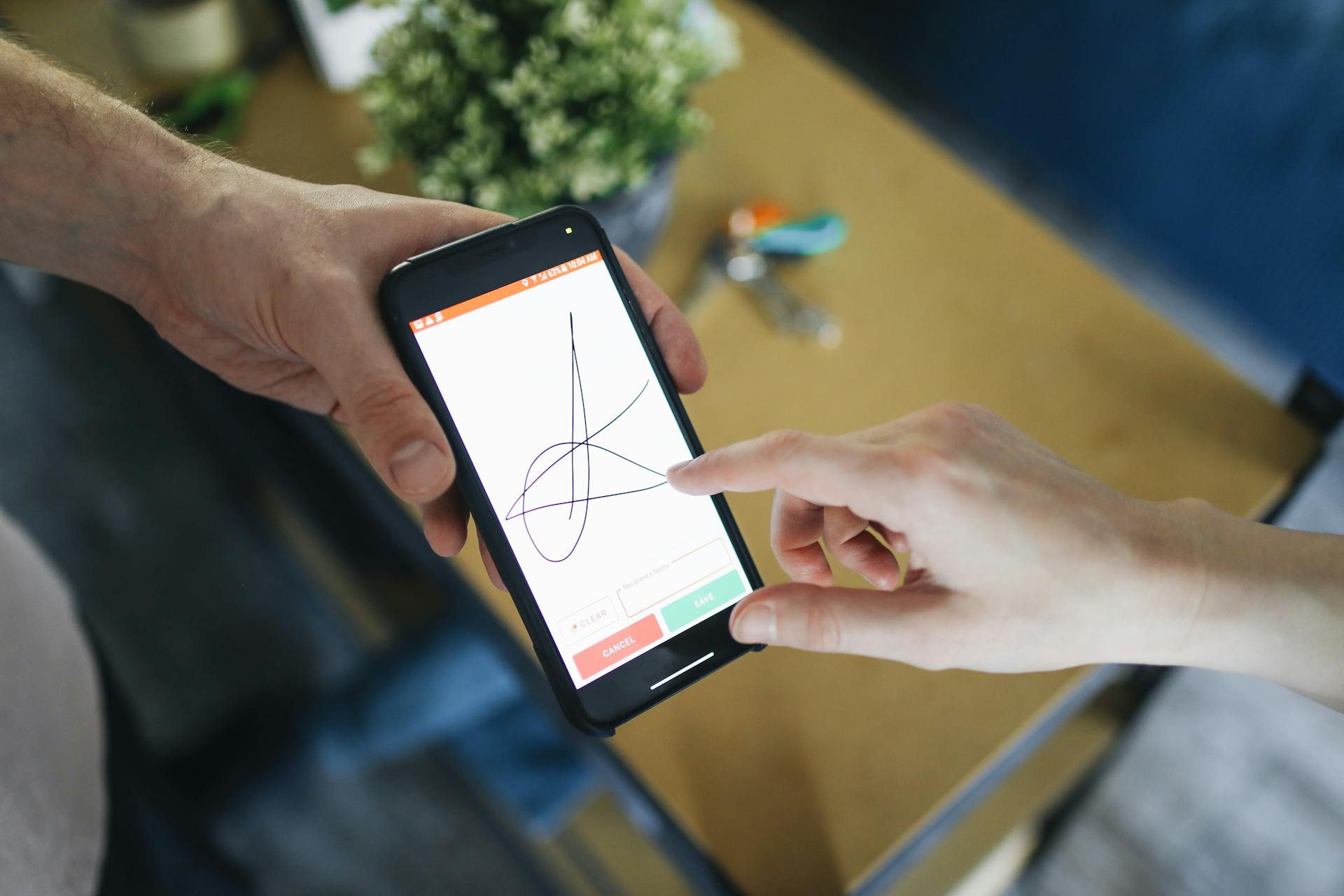
Some popular mobile payment methods include Apple Pay, Google Pay, and Square's mobile payment system. Apple Pay works on iPhone (version 6 or newer) and Apple Watch, while Google Pay is available in 79 countries and works with Google Chrome or Android devices. Square's mobile payment system requires a Square Reader and the Square Point of Sale app for iOS or Android.
Here are some key features of popular mobile payment methods:
Mobile payment methods have many benefits for businesses, including increased tipping rates and the ability to accept payments anywhere, anytime.
Credit Card
You can use your credit card to make mobile payments, but be aware that entering card details on a mobile phone can reduce the success rate of payments. This is because the process is not as seamless as other mobile payment methods.
To make credit card payments online, you'll need to enter your card details on a website. However, this can be a security risk if the website is not secure, as your personal credit card information can leak online.
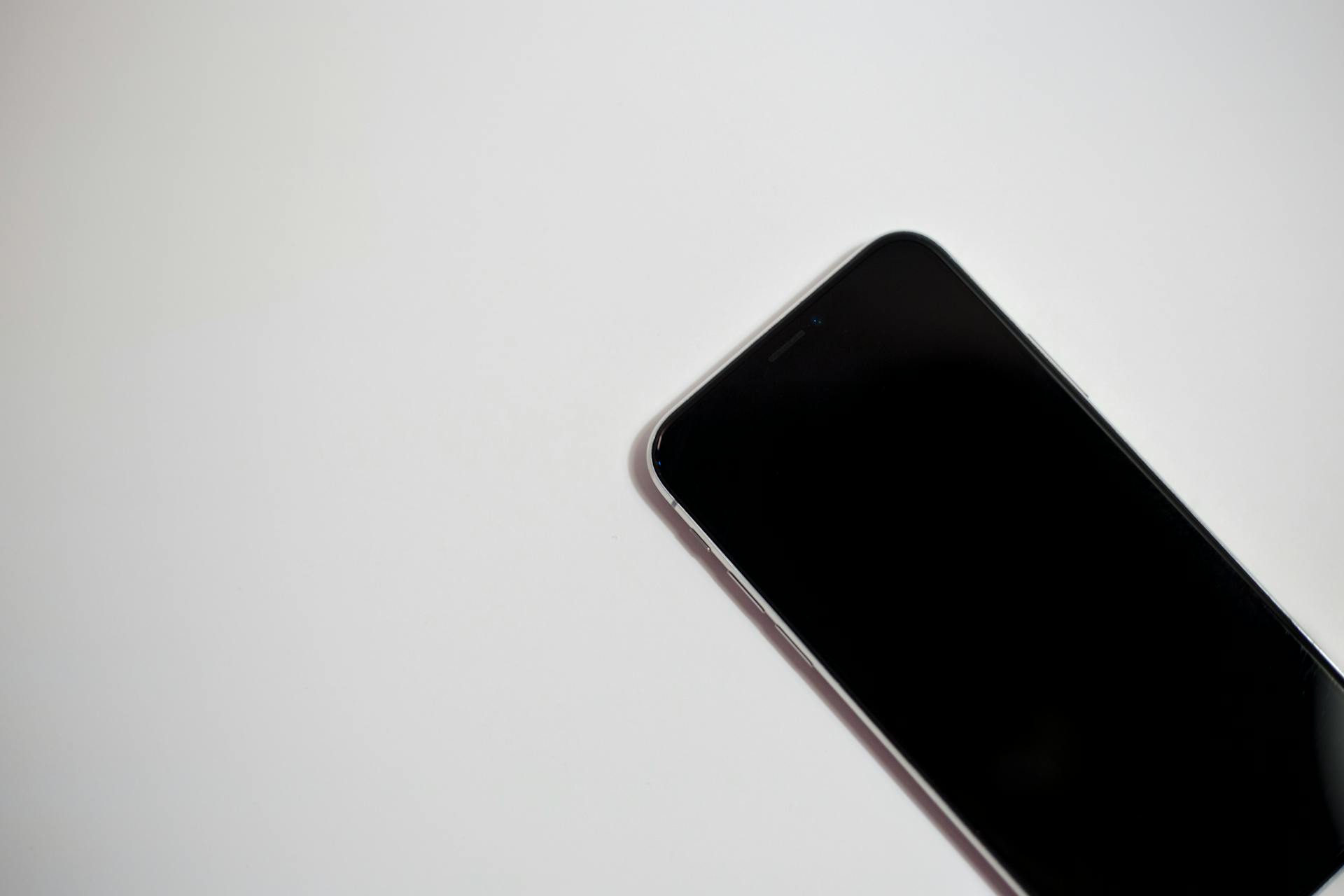
A secure payment vendor can automatically identify customers and recall their card details for future purchases, making the payment process faster and more convenient. This can lead to higher conversion rates for additional purchases.
If you're a business owner, you can accept credit card payments online through a checkout page using a "Buy With Apple Pay" Button, but only if you run an online store with a Square reader enabled for NFC.
Here are some benefits of using credit card payments:
- No fees
- Widely known and accepted
- Easy integration with Apple services
Carrier Billing
Carrier billing is a convenient and secure way to make payments online. It allows consumers to charge purchases directly to their mobile phone bill, without the need for credit or debit cards.
This method is popular in Asia, where 70% of all digital content purchased online uses direct mobile billing. It provides two-factor authentication and a risk management engine to prevent fraud.
One of the benefits of carrier billing is its ease of use – no pre-registration or new mobile software is required. Transactions are also completed quickly, usually in less than 10 seconds.
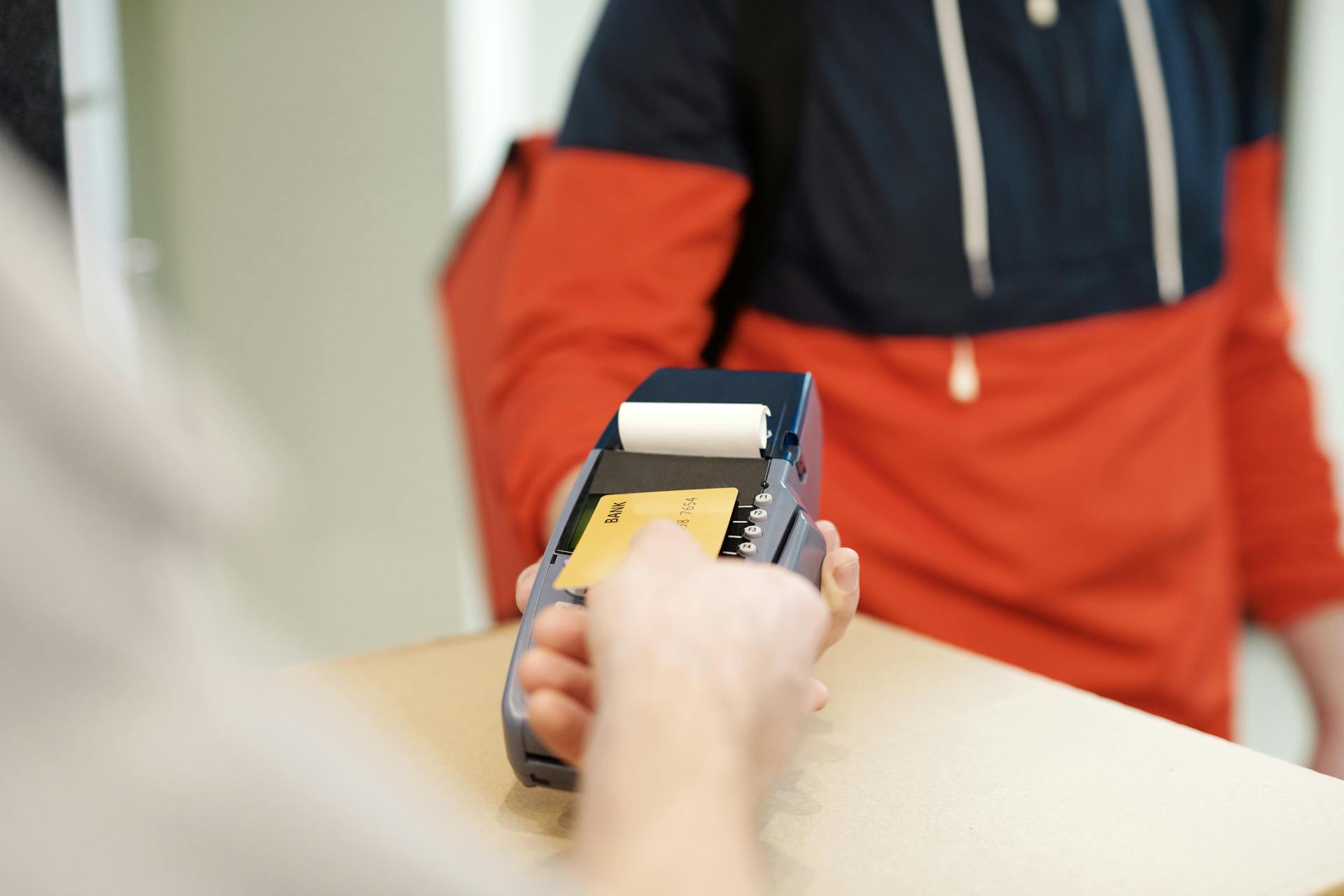
Here are some key benefits of carrier billing:
- Security – two-factor authentication and a risk management engine prevents fraud.
- Convenience – no pre-registration and no new mobile software is required.
- Easy – It is just another option during the checkout process.
- Fast – most transactions are completed in less than 10 seconds.
- Proven – 70% of all digital content purchased online in some parts of Asia uses the direct mobile billing method
The payout rate for carrier billing can be lower than other mobile payment options, typically ranging from 45% to 91.7% in some countries. However, it offers a convenient and secure way to make payments online.
Types of Apps
Mobile payment methods have come a long way, and with the rise of digital wallets, users can now make payments with just a tap on their devices. Apple Pay, for instance, works on the iPhone (version 6 or newer), as well as the Apple Watch, allowing users to add debit or credit cards to the Wallet app and make contactless payments.
There are various types of mobile payment apps available, each with its own unique features. One such app is Google Pay, which is a great option for people using Google Chrome or Android devices. It lets users connect existing cards and use them on their phones or computers, and it's available in 79 countries.
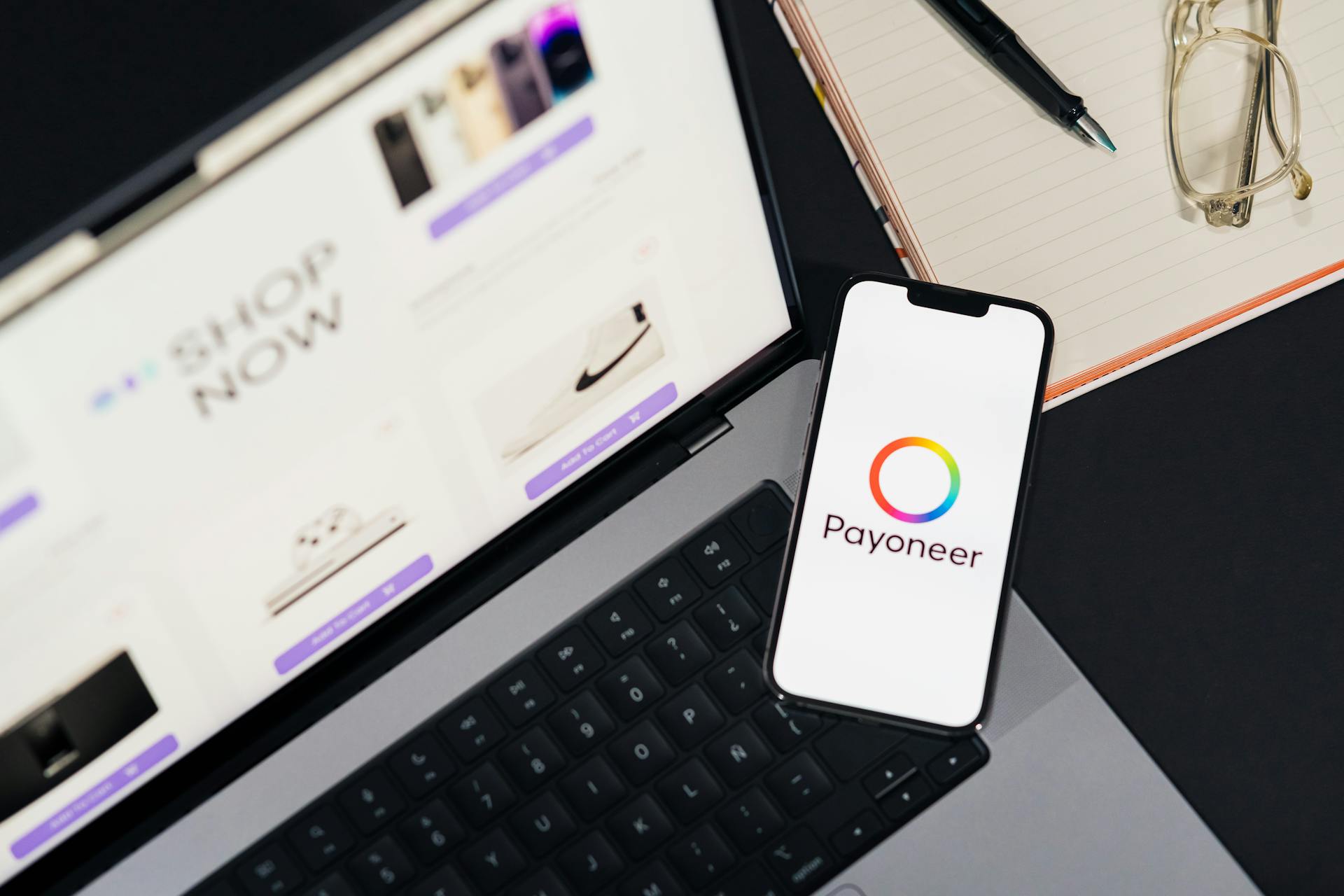
Some mobile payment apps, like Apple Pay, have no fees associated with them. They're also widely known and accepted, making them a convenient option for users. Additionally, they offer easy integration with the respective company's services, such as Apple's ecosystem.
Other apps, like Samsung Pay, have similar features to other digital wallets but offer a unique feature called Samsung Pay Touch, which turns Samsung phones into their own POS systems, allowing for easy acceptance of in-person payments.
Here are some of the most common types of mobile payment apps:
- Apple Pay: only works with Apple products, has no fees, is widely known and accepted, and offers easy integration with Apple services.
- Google Pay: available in 79 countries, has no fees, is widely known and accepted, and offers easy integration with Google services.
- Samsung Pay: limited to Samsung devices, has similar features to other digital wallets, and offers a unique feature called Samsung Pay Touch.
- Zelle: a P2P payment system that integrates with most major banks, has no fees, and offers nearly instant fund transfers.
- Mobile banking apps: offer features like transferring money between accounts, paying bills, and depositing checks by taking a photo, but don't usually work for in-person, contactless purchases.
These are just a few examples of the many mobile payment apps available, each with its own unique features and benefits. By understanding the different types of mobile payment apps, users can choose the one that best suits their needs and preferences.
A fresh viewpoint: Shop and Pay Later Apps
Other Methods
QR codes can be of two main categories: static and dynamic. Static QR codes contain fixed information and can't be changed once created.
Mobile wallets like Apple Pay and Google Pay use Near Field Communication (NFC) technology to facilitate payments. This technology allows for secure transactions between devices.
QR code payments have become increasingly popular due to their convenience and ease of use.
Worth a look: Financial Technology Partners
Audio Signal-Based
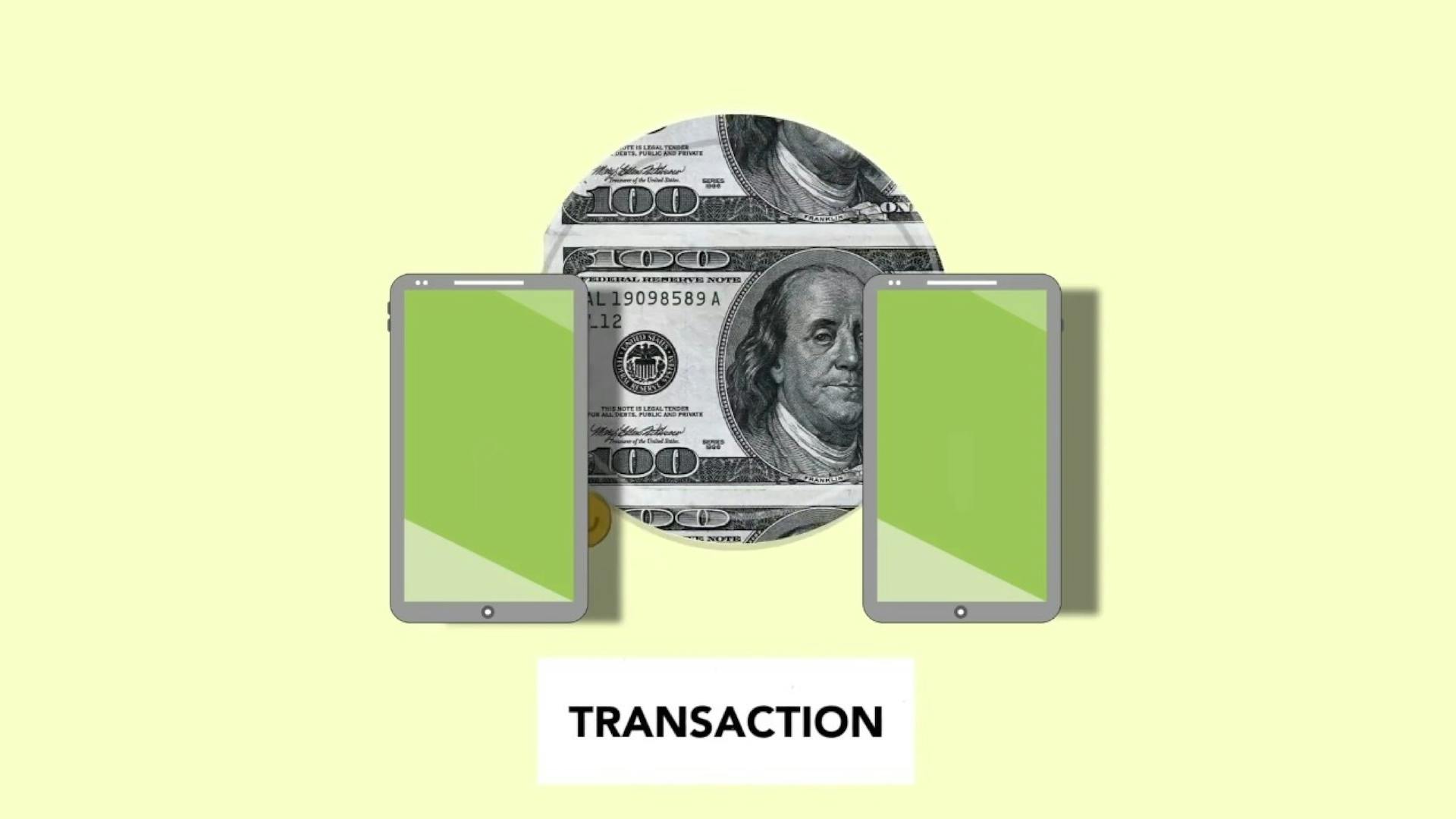
Audio Signal-Based payments are a unique way to make transactions using your mobile phone's audio channel. Several companies have developed technology that uses the acoustic features of cell phones to support mobile payments.
The audio signature produced by these technologies, such as near sound data transfer (NSDT), data over voice, and NFC 2.0, can be picked up by the microphone of the cell phone to enable electronic transactions.
TWINT, a company based in Switzerland, offers a similar function.
Some of the key applications of audio signal-based payments include mobile payments and financial technology.
Related reading: Financial Technology in India
Frequently Asked Questions
What is the most popular mobile payment service?
According to user preferences, Google Pay is the most widely used mobile payment service, especially among Android users. However, other popular options like Apple Pay, Cash App, and Venmo also offer convenient payment solutions.
What does "via mobile payment" mean?
Via mobile payment" refers to a transaction made using a mobile device with Near Field Communication (NFC) capabilities, allowing for secure and convenient financial transactions. Learn how your business can benefit from accepting mobile payments.
What is the difference between mobile payment and digital payment?
Mobile payments are used in-store, while digital payments are used online. This distinction highlights the convenience and flexibility of mobile payment options.
How does pay by mobile number work?
To use Paym, link your mobile number to your bank account through your bank's mobile app, then enter the recipient's mobile number to send payments. This seamless process eliminates the need for a separate app or website.
Sources
Featured Images: pexels.com
